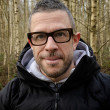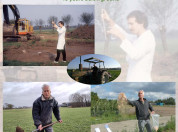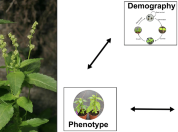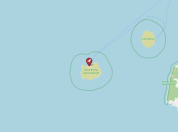Search
Filter by
Type
Tags
Dossiers
Themes
Departments
Active filters
1035 search results
Search results
-
Paul Jerem
Guest researcher
-
From Pioneer to Soil Prophet: 40 years belowground - Farewell symposium Wietse de Boer
On Thursday April 4 we'll have the Farewell Symposium and reception for our long-time colleague Prof. Dr Wietse de Boer (Department of Microbial Ecology at NIOO and Wageningen University).
-
How genetic research contributes to effective lion conservation
Human measures to protect lions have an impact on the genetic health of populations. Dutch and Kenyan scientists discovered this by analysing the DNA of 171 Kenyan lions. "By fencing reserves, for example, the chance of inbreeding increases." With the knowledge and tools from the research, management authorities in Kenya can better protect their valuable wildlife in the future.

-
Brechje van Beek
Web Editor
-
Suzanne McGowan appointed Professor of Aquatic Ecosystem Dynamics
Meet the new Special Professor of Aquatic Ecosystem Dynamics: Suzanne McGowan. As of 2024 she is appointed at Utrecht University. Her chair offers a unique combination between the university's faculties of Science and Geosciences. McGowan integrates this with her main affiliation as the Head of Aquatic Ecology at the Netherlands Institute of Ecology (NIOO-KNAW). As a professor, she aims to uncover how water ecosystems have been functioning, and how the major changes on our planet affect this.
-
Plant gene expression plasticity and adaptation to climate change
One effect of climate change is that plants are exposed to increasing local variation in weather conditions, including more episodes of heat stress. Should plants evolve to perform better at high temperatures, or should they become more plastic and cope with a broader range of temperatures? This project compares a large panel of duckweed genotypes for genetic differences in thermal plasticity in gene expression. Because duckweeds are the fastest growing plants in the world, we can use experimental evolution approaches to test if more plastic genotypes have a selective advantage when temperature environments become more variable.
-
Botanical records through a social lens
This collaborative project is led by Folgert Karsdorp of the KNAW Meertens Institute, and investigates the social biases and cultural aspects of historical botanical records (that is, citizen science avant la lettre). In collaboration with FLORON, our contribution to this project is to implement a case study that explores historical botanical records from the Netherlands to characterize patterns of distribution and abundance of Asteraceae species in cities through time. We aim to let these historical records inform us about which species are winners and which are losers of the urbanization process. This can provide unique information on the plant traits that mediate successful adaptation to urbanization.
-
ECORAMA – Ecology and evolution of species range margins
This is a collaborative project that is led by John Pannell and Shengman Lyu at the University of Lausanne. The project investigates the genetic, demographic and evolutionary processes that determine species range margins, using Mercurialis annua as a model species. Our contribution to this project is to set up and maintain a field experiment in which experimental plant populations of different admixture histories are monitored for performance at Wageningen, which is at the current distributional range margin of the species.
-
Stora Karlsö
Metadata of the field study (STK-1) at Stora Karlsö (STK), Sweden
-
Jia Peng
PhD Candidate
